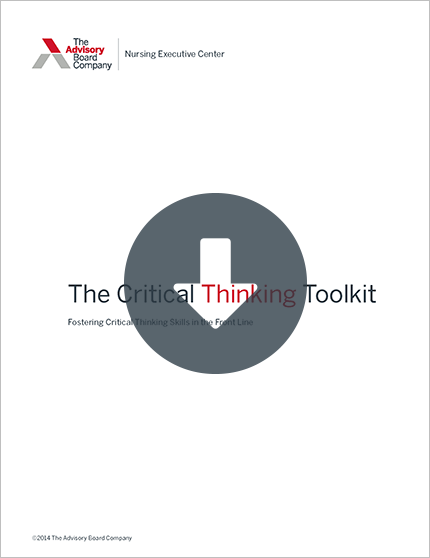Auto logout in seconds.
Continue LogoutStudents at the University of Chicago (UC) Pritzker School of Medicine don't just learn about patient safety in the classroom, they get to experience it firsthand in the school's "patient safety room of horrors."
UC Pritzker School of Medicine says the room is designed to teach students to identify safety hazards that could be lurking in a patient's room. Preclinical medical students first enter the room during their second year of school. They visit the room again during their third year, after they've completed their clerkships. The university also uses the room as part of its resident boot camp.
Inside the 'room of horrors'
Before entering the room, students receive a mock door chart that details a patient's medical condition, including the patient's allergies and any complications. The students then have 15 minutes to enter the room and identify all the safety hazards surrounding the patient.
For example, one exercise features a 55-year-old dummy patient named Michael Washington who had pneumonia and Clostridium difficile diarrhea. The patient's mock door chart indicated that his condition was complicated by delirium, and that he had experienced a fall the night before that did not result in any significant injuries. The chart also noted that patient has latex and penicillin allergies.
With that information in hand, it's up to the students to identify the patient safety hazards in the room:
- A safety railing on the patient's bed was not being used;
- There was a set of latex gloves next to the patient's bed;
- The patient's IV bag contained penicillin and was intended for a different patient; and
- The hand sanitizer dispenser in the room was broken, which could mean doctors and nurses were not practicing proper hand hygiene.
In addition to checking for safety hazards, students also check the room for potential cost hazards in an effort to practice being cost-consciousness and curb overuse. For instance, Washington's room contained unnecessary hand restraints and an unneeded catheter.
Jeanne Farnan, an associate professor of medicine and associate dean of evaluation and continuous quality improvement at UC, said, "When you walk into a patient's room, it's not just the medications, but many things that can put your patient at risk for some reason or other, resulting in either [a] near-miss or adverse event." Farnan added, "We try to make our residents and students very vigilant about recognizing that by stressing the importance of situational awareness."
The room's results
Research suggests the room is honing in on a skill that may go undeveloped in providers. A 2015 study of the room's effects found 128 medical interns who underwent the training identified an average of 5.1 hazards out of nine. Of 86 third-year medical students who trained in the room, the research found 83% correctly identified the bed's safety railing as a hazard, but other hazards went unnoticed. For example, just 13% of third-year medical students noticed an absence of deep venous thrombosis prophylaxis, and just 5% identified the patients' risk of developing pressure ulcers (Knowles, Becker's Clinical Leadership & Infection Control, 10/22; Murphy, AMA Wire, 10/22).
Get 1-page cheat sheets on how hospital quality ratings programs work
Download our one page sheets for summaries on the methodology and metric categories used in seven hospital quality rating programs:
Don't miss out on the latest Advisory Board insights
Create your free account to access 1 resource, including the latest research and webinars.
Want access without creating an account?
You have 1 free members-only resource remaining this month.
1 free members-only resources remaining
1 free members-only resources remaining
You've reached your limit of free insights
Become a member to access all of Advisory Board's resources, events, and experts
Never miss out on the latest innovative health care content tailored to you.
Benefits include:
You've reached your limit of free insights
Become a member to access all of Advisory Board's resources, events, and experts
Never miss out on the latest innovative health care content tailored to you.
Benefits include:
This content is available through your Curated Research partnership with Advisory Board. Click on ‘view this resource’ to read the full piece
Email ask@advisory.com to learn more
Click on ‘Become a Member’ to learn about the benefits of a Full-Access partnership with Advisory Board
Never miss out on the latest innovative health care content tailored to you.
Benefits Include:
This is for members only. Learn more.
Click on ‘Become a Member’ to learn about the benefits of a Full-Access partnership with Advisory Board
Never miss out on the latest innovative health care content tailored to you.

